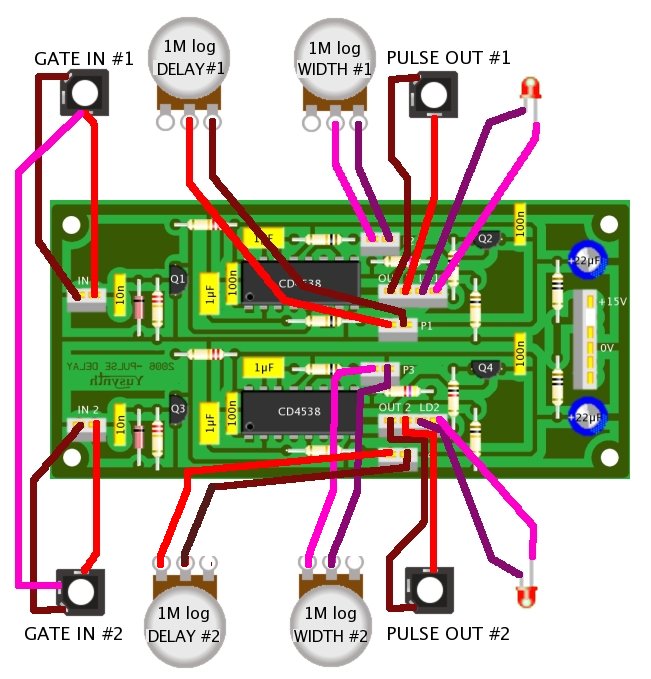| Modified : mar. 12th 2009 |
Dual PULSE DELAY
|
 |
back to summary |
 |
 |
| Description |
| Modified : mar. 12th 2009 |
Dual PULSE DELAY
|
 |
back to summary |
 |
 |
| Description |
|
 |
 |
Schematic |
 |
 |
 |
 |
List of parts and building instructions
|
|||||||||||||||||||||||||||||||||||||||||||||||||||
|
|||||||||||||||||||||||||||||||||||||||||||||||||||
| Wiring |
|||||||||||||||||||||||||||||||||||||||||||||||||||
 |
 |
 |
 |
 |
Trimming
|
| This circuit requires no setting
or trimming. It must work right away. |
 |
 |
References |
Information and datasheet for
CD4538  Information and datasheet for BC547  |
 |
|
|
| Name
: Patrick Pseudo : Baronrouge Modular project: JHC live lab Location Toulon, France Web site : http://myspace.com/patjhc |
|
|
|||
 |
 |